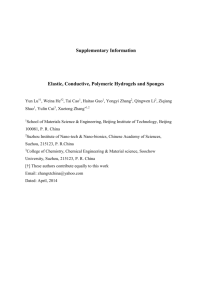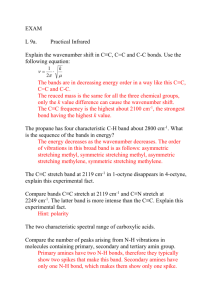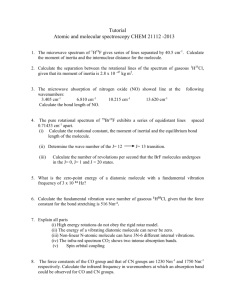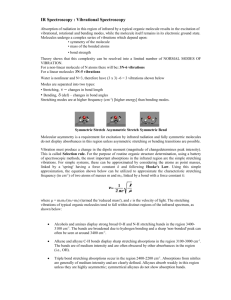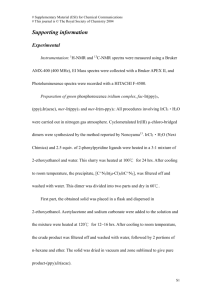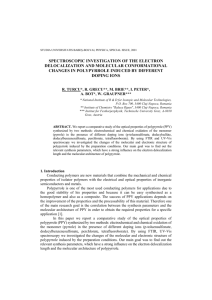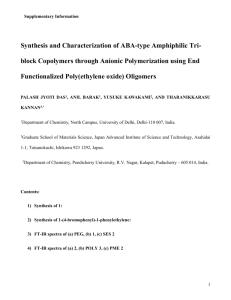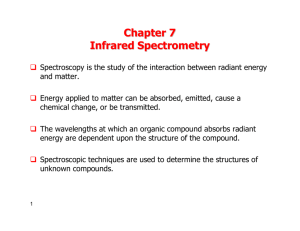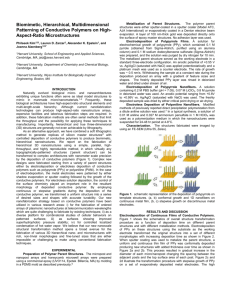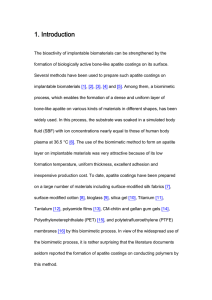FT-IR spectra, powder XRD pattern and
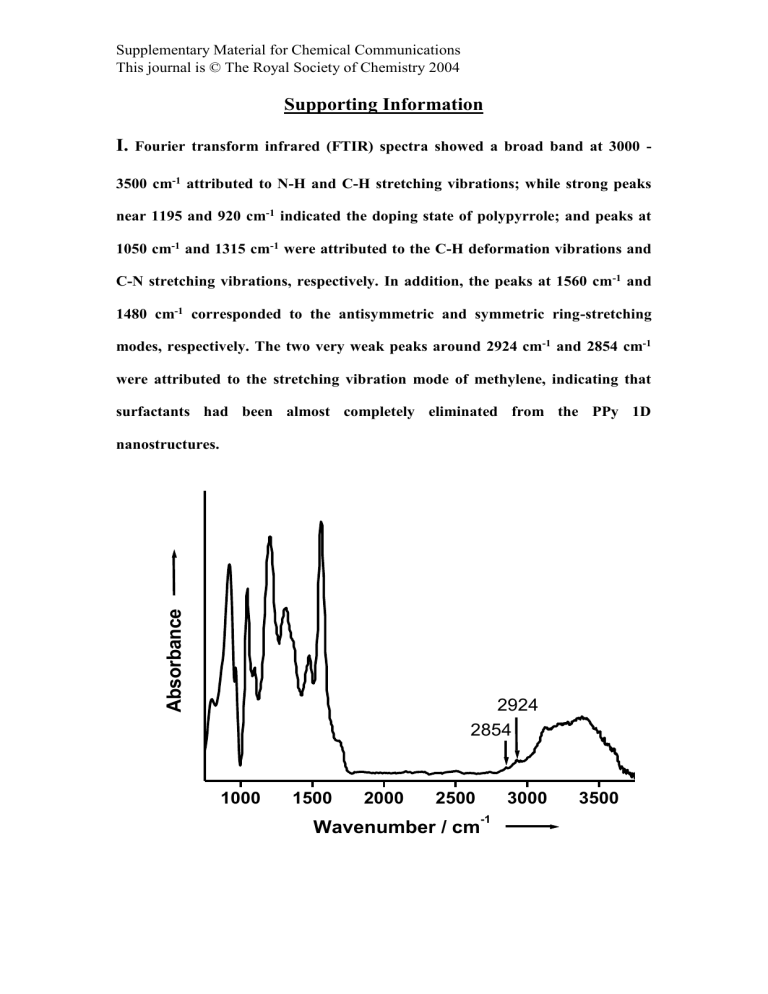
Supplementary Material for Chemical Communications
This journal is © The Royal Society of Chemistry 2004
Supporting Information
I.
Fourier transform infrared (FTIR) spectra showed a broad band at 3000 -
3500 cm -1 attributed to N-H and C-H stretching vibrations; while strong peaks near 1195 and 920 cm -1 indicated the doping state of polypyrrole; and peaks at
1050 cm -1 and 1315 cm -1 were attributed to the C-H deformation vibrations and
C-N stretching vibrations, respectively. In addition, the peaks at 1560 cm -1 and
1480 cm -1 corresponded to the antisymmetric and symmetric ring-stretching modes, respectively. The two very weak peaks around 2924 cm -1 and 2854 cm -1 were attributed to the stretching vibration mode of methylene, indicating that surfactants had been almost completely eliminated from the PPy 1D nanostructures.
2924
2854
1000 1500 2000 2500 3000 3500
Wavenumber / cm
-1
Supplementary Material for Chemical Communications
This journal is © The Royal Society of Chemistry 2004
II. The following figure shows the powder XRD pattern of as-made PPy nanostructures, which indicates the PPy nanostructures are amorphous and the lamellar mesostructures of (CTA)
2
S
2
O
8 are completely disappeared.
Supplementary Material for Chemical Communications
This journal is © The Royal Society of Chemistry 2004
III. Conductivities of the PPy 1D nanostructures were measured with the standard Van Der Pauw direct current (DC) four-probe method. PPy 1D nanostructures showed typical non-metallic behavior with a room temperature conductivity of 7.3×10 -3 Scm -1 . The low room temperature conductivity of PPy
1D nanostructures was ascribed to the low degree of doping. The overall pattern of temperature dependent conductivity of polypyrrole is well described by Mott’s law for quasi one-dimensional variable-range hopping.
